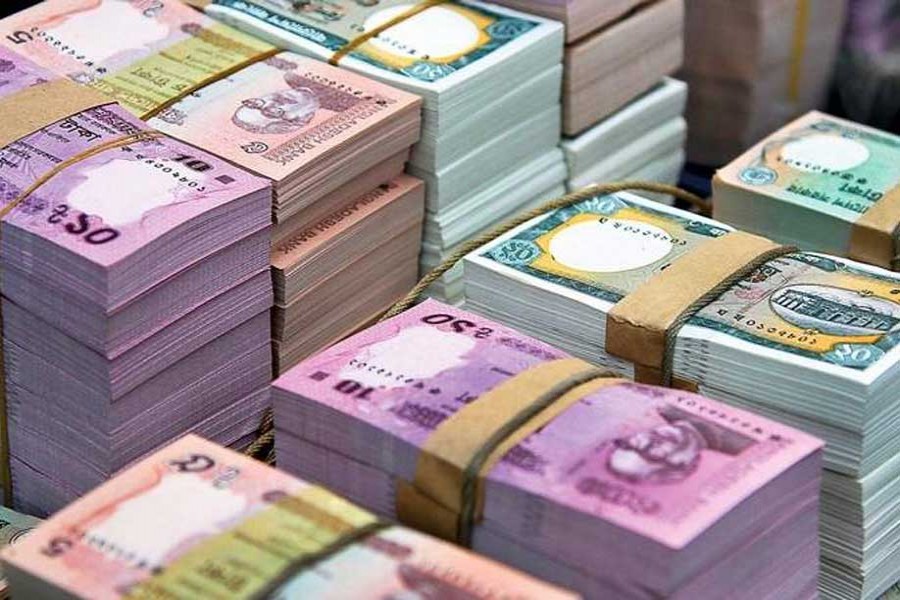The recent crackdown on illegal casinos in the city exposed the perception that huge sums of cash are available with a number of people. Instead of keeping the money in banks, they preferred to hold big cash as these were mostly earned from illegal and tax-evaded income. Taking cue from this, a small section of people in news and social media raised the issue of demonetising Tk 500 and Tk 1,000 bank notes. Bangladesh Bank, however, has ruled out such possibility.
To get an idea about the size of total cash in the economy, one needs to look at the amount of currency in circulation at a given point of time. At the end of the past fiscal year (June 30, 2019), according to the central bank statistics, outstanding amount of total currency in circulation stood at Tk 1.70 trillion (or Tk 1703.871 billion). The amount was around Tk 1.55 trillion at the end of previous fiscal year (FY18). So, the currency in circulation increased by around 10.0 per cent in the past fiscal year (FY19). Currency in circulation, however, posted abnormal growth in two fiscal years during the last decade. It was 27.90 per cent in FY10 and 34.80 per cent in FY16.
The amount of currency in circulation is generally considered as the total amount of cash in an economy though it is not an accurate estimate. Other tools are there to measure the amount of cash. These, however, require more detailed and sophisticated data.



There are two aspects of currency in circulation. Without going into the details of monetary aggregates, it may be simply mentioned that one is currency creation or supply side, another is use side. Bangladesh Bank notes and government notes and coins generate the total currency in circulation with Bangladesh Bank notes accounting for 99.0 per cent of the total. Denominations of Tk 10, Tk 20, Tk 50, Tk 100, Tk 500 and Tk 1,000 are issued by the central bank in Bangladesh.
On use side, there are also two aspects. One is currency in banks or cash in hand with banks, another is currency outside banks or currency with the public. Currency in banks is technically termed 'currency in tills of deposit money banks (DMBs)'. It is also cash because banks maintain cash and pay the cash to depositors and lenders. Currency with the public is the amount of money held by individuals and institutions entirely in cash.
In the country, around 90.0 per cent of the currency in circulation is now with the public. Bangladesh Bank statistics revealed that total amount of currency outside banks stood at Tk 1.54 trillion at the end of FY19 which was Tk 1.41 trillion at the end of FY18. It indicates that big amount of cash held by some people or organisations is not entirely an abnormal phenomenon.
Moreover, when compared to the country's Gross Domestic Product (GDP), it shows that the proportion of cash in Bangladesh economy is not as large as presumed by many. The most common way to express use of cash in a country is to calculate the ratio of currency in circulation (CIC) to nominal GDP. Nominal GDP is GDP at current market price and thus not inflation-adjusted. In FY19, nominal GDP of Bangladesh was estimated at Tk 25.36 trillion when total amount of currency in circulation was Tk 1.70 trillion. So the CIC-GDP ratio stood at 6.72 per cent in the past fiscal. The ratio is reasonably low compared to advanced developing countries like China, India and Russia. CIC-GDP ratio is around 9.50 per cent in China and around 9.0 per cent in Russia. In India the ratio stood at 10.70 per cent in March this year.
Indian case is quite relevant for Bangladesh. In a bid to curb black money, on November 08, 2016, Indian Prime Minister Narendra Modi demonetised Rs 500 and Rs 1000 notes. Almost two years later, the Reserve Bank of India (RBI) unveiled that 99.30 per cent of all the demonetised bank notes were returned to the central bank. It meant black money holders didn't accumulate their undisclosed or illegal income largely in cash. RBI's annual report also pointed out that demonetisation ended up causing some damage to the economy. Moreover, CIC-GDP ratio data after a year of demonetisation indicated that cash is still much preferable in India though digital transaction has been increasing since demonetisation. Thus a substantial cut in frequency of cash transactions remained largely unfulfilled.
In Bangladesh, the CIC-GDP ratio fluctuated between 5.50 per cent and 7.60 per cent during the last one decade which means cash hoarding by people is mostly in line with the expansion of GDP.
Thus the exposure of big cash during the casino crackdown needs to be analysed carefully. Per capita CIC may be an interesting indicator in this regard. With a population of around 162 million, per capita CIC is estimated at Tk 10,572 only. Thus it may be presumed that a large section of people have small amount of cash in their houses. Only a few people have large or excessive amount of cash at their disposal due to rising disparity in income. In 2010, share of bottom five per cent of the population was only 0.78 per cent of total national income and it further declined to 0.23 per cent in 2016. At the same time, income share of top five per cent increased to 27.89 per cent in 2016 from 24.61 per cent in 2010.
Those who floated the idea of demonetising of Tk 500 and Tk 1,000 notes clearly ignored the fact of lower CIC-GDP ratio and concentration of resources in a few hands.


